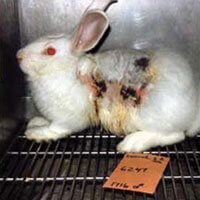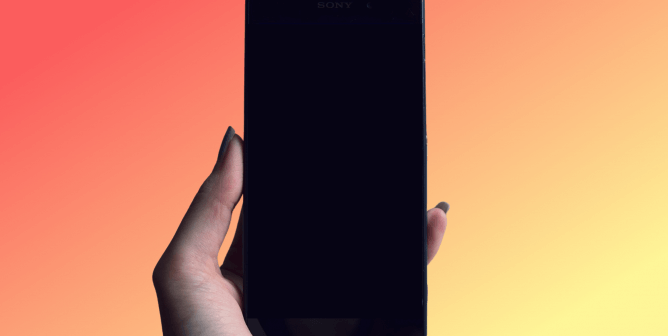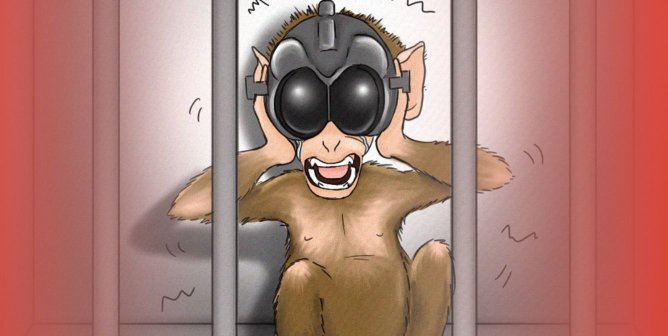These Answers to Arguments for Animal Testing Prove It’s Bad Science
Studies published in prestigious medical journals have shown time and again that animal testing is bad science and wastes lives—both animal and human—and precious resources by trying to infect animals with diseases that they would never normally contract. Fortunately, a wealth of cutting-edge non-animal research methodologies promises a brighter future for both animal and human health. The following are common statements supporting animal experimentation followed by the arguments against them.
“Every major medical advance is attributable to experiments on animals.”
This is simply not true. An article published in the esteemed Journal of the Royal Society of Medicine has even evaluated this very claim and concluded that it was not supported by any evidence. Most experiments on animals are not relevant to human health, they do not contribute meaningfully to medical advances, and many are undertaken simply out of curiosity and do not even pretend to hold promise for curing illnesses. The only reason people are under the misconception that these experiments help humans is because the media, experimenters, universities, and lobbying groups exaggerate the potential they have to lead to new cures and the role they’ve played in past medical advances.
Read More
Researchers from the Yale School of Medicine and several British universities published a paper in The BMJ titled “Where Is the Evidence That Animal Research Benefits Humans?” The researchers systematically examined studies that used animals and concluded that little evidence exists to support the idea that experimentation on animals has benefited humans.
In fact, many of the most important advances in health are attributable to human studies, including the discovery of the relationships between cholesterol and heart disease and smoking and cancer, the development of X-rays, and the isolation of the AIDS virus.
Between 1900 and 2000, life expectancy in the United States increased from 47 to 77 years. Although animal experimenters take credit for this improvement, medical historians report that improved nutrition, sanitation, and other behavioral and environmental factors—rather than anything learned from animal experiments—are responsible for the fact that people are living longer lives.
While experiments on animals have been conducted during the course of some discoveries, this does not mean that animals were vital to the discovery or are predictive of human health outcomes or that the same discoveries would not have been made without using animals. Human health is more likely to be advanced by devoting resources to the development of non-animal test methods, which have the potential to be cheaper, faster, and more relevant to humans, instead of to chasing leads in often inaccurate tests on animals.
“If we didn’t use animals, we’d have to test new drugs on people.”
The fact is that we already do test new drugs on people. No matter how many tests on animals are undertaken, someone will always be the first human to be tested on. Because animal tests are so unreliable, they make those human trials all the more risky. The National Institutes of Health (NIH) has noted that 95 percent of all drugs that are shown to be safe and effective in animal tests fail in human trials because they don’t work or are dangerous. And of the small percentage of drugs approved for human use, half end up being relabeled because of side effects that were not identified in tests on animals.
Read More
Vioxx, Phenactin, E-Ferol, Oraflex, Zomax, Suprol, Selacryn, and many other drugs have had to be pulled from the market in recent years because of adverse reactions experienced by people taking them. Despite rigorous animal tests, prescription drugs kill 100,000 people each year, making them our nation’s fourth-largest killer.
Fortunately, a wealth of cutting-edge non-animal research methods promises a brighter future for both animal and human health. More information about the failure of experiments on animals can be found here.
“We have to observe the complex interactions of cells, tissues, and organs in living animals.”
Taking healthy beings from a completely different species, artificially inducing a condition that they would never normally contract, keeping them in an unnatural and stressful environment, and trying to apply the results to naturally occurring diseases in human beings is dubious at best. Physiological reactions to drugs vary enormously from species to species (and even within a species). Penicillin kills guinea pigs. Aspirin kills cats and causes birth defects in rats, mice, guinea pigs, dogs, and monkeys. And morphine, a depressant in humans, stimulates goats, cats, and horses. Further, animals in laboratories typically display behavior indicating extreme psychological distress, and experimenters acknowledge that the use of these stressed-out animals jeopardizes the validity of the data produced.
Read More
Sir Alexander Fleming, who discovered penicillin, remarked, “How fortunate we didn’t have these animal tests in the 1940s, for penicillin would probably have never been granted a license, and probably the whole field of antibiotics might never have been realized.” Modern non-animal research methods are faster, cheaper, and more relevant to humans than tests on animals.
Sophisticated human cell- and tissue-based research methods allow researchers to test the safety and effectiveness of new drugs, vaccines, and chemical compounds. The HμREL biochip uses living human cells to detect the effects of a drug or chemical on multiple interacting organs, VaxDesign’s Modular Immune in vitro Construct (MIMIC®) system uses human cells to create a working dime-sized human immune system for testing vaccines, and Harvard researchers have developed a human tissue-based “lung-on-a-chip“ that can “breathe” and be used to estimate the effects of inhaled chemicals on the human respiratory system. Human tissue-based methods are also used to test the potential toxicity of chemicals and for research into burns, allergies, asthma, and cancer.
Clinical research on humans also gives great insights into the effects of drugs and how the human body works. A research method called microdosing can provide information on the safety of an experimental drug and how it’s metabolized in the body by administering an extremely small one-time dose that’s well below the threshold necessary for any potential pharmacologic effect to take place. Researchers can study the working human brain using advanced imaging techniques and can even take measurements down to a single neuron.
“Animals help in the fight against cancer.”
Through taxes, donations, and private funding, Americans have spent hundreds of billions of dollars on cancer research since 1971. However, the return on that investment has been dismal. A survey of 4,451 experimental cancer drugs developed between 2003 and 2011 found that more than 93 percent failed after entering the first phase of human clinical trials, even though all had been tested successfully on animals. The authors of this study point out that animal “models” of human cancer created through techniques such as grafting human tumors onto mice can be poor predictors of how a drug will work in humans.
Read More
Richard Klausner, former head of the National Cancer Institute (NCI), has observed, “The history of cancer research has been a history of curing cancer in the mouse. We have cured mice of cancer for decades and it simply didn’t work in humans.” Studies have found that the chemicals that cause cancer in rats only caused cancer in mice 46 percent of the time. If extrapolating from rats to mice is so problematic, how can we extrapolate results from mice, rats, guinea pigs, rabbits, cats, dogs, monkeys, and other animals to humans?
The NCI now uses human cancer cells, taken by biopsy during surgery, to perform first-stage testing for new anti-cancer drugs, sparing the 1 million mice the agency previously used annually and giving us all a much better shot at combating cancer.
Furthermore, according to the World Health Organization, cancer is largely preventable, yet most health organizations that focus on cancer spend a pittance on prevention programs, such as public education.
Epidemiological and clinical studies have determined that most cancers are caused by smoking and by eating high-fat foods, foods high in animal protein, and foods containing artificial colors and other harmful additives. We can beat cancer by taking these human-derived, human-relevant data into account and implementing creative methods to encourage healthier lifestyle choices.
“Science has a responsibility to use animals to keep looking for cures for all the horrible diseases that people suffer from.”
Every year in the U.S., animal experimentation gobbles up billions of dollars (including 40 percent of all research funding from the National Institutes of Health), and nearly $3 trillion is spent on health care. While funding for animal experimentation and the number of animals used in experiments continues to increase, the U.S. still ranks 42nd in the world in life expectancy and has a high infant mortality rate compared to other developed countries. A 2014 review paper co-authored by a Yale School of Medicine professor in the prestigious medical journal The BMJ documented the overwhelming failure of experiments on animals to improve human health. It concluded that “if research conducted on animals continues to be unable to reasonably predict what can be expected in humans, the public’s continuing endorsement and funding of preclinical animal research seems misplaced.”
Read More
While incidences of heart disease and strokes have recently shown slight declines—because of a change in lifestyle factors, such as diet and smoking, rather than any medical advances—cancer rates continue to rise, and alcohol- and drug-treatment centers, prenatal care programs, community mental health clinics, and trauma units continue to close because they lack sufficient funds.
More human lives could be saved and more suffering prevented by educating people about the importance of avoiding fat and cholesterol, quitting smoking, reducing alcohol and other drug consumption, exercising regularly, and cleaning up the environment than by all the animal tests in the world.
“Many experiments are not painful to animals and are therefore justified.”
The only U.S. law that governs the use of animals in laboratories, the Animal Welfare Act (AWA), allows animals to be burned, shocked, poisoned, isolated, starved, forcibly restrained, addicted to drugs, and brain-damaged. No experiment, no matter how painful or trivial, is prohibited—and painkillers are not even required. Even when alternatives to the use of animals are available, U.S. law does not require that they be used—and often they aren’t. Because the AWA specifically excludes rats, mice, birds, and cold-blooded animals, more than 95 percent of the animals used in laboratories are not even covered by the minimal protection provided by federal laws. Because they aren’t protected, experimenters don’t even have to provide them with pain relief.
Between 2010 and 2014, nearly half a million animals—excluding mice, rats, birds, and cold-blooded animals—were subjected to painful experiments and not provided with pain relief. A 2009 survey by researchers at Newcastle University found that mice and rats who underwent painful, invasive procedures, such as skull surgeries, burn experiments, and spinal surgeries, were provided with post-procedural pain relief only about 20 percent of the time.
Read More
In addition to the actual pain of experiments, a comprehensive view of the situation for animals in laboratories should take into account the totality of the suffering imposed on them, including the stress of capture, transportation, and handling; the extreme confinement and unnatural living conditions; the deprivation that constitutes standard husbandry procedures; and the physical and psychological stress experienced by animals used for breeding, who endure repeated pregnancies, only to have their young torn away from them, sometimes immediately after birth.
Animals in laboratories endure lives of deprivation, isolation, stress, trauma, and depression even before they are enrolled in any sort of protocol. This fact is especially apparent when one considers the specialized needs of each species. In nature, many primates, including rhesus macaques and baboons, stay for many years or their entire lives with their families and troops. They spend hours together every day, grooming each other, foraging, playing, and making nests to sleep in each night. But in laboratories, primates are often caged alone. Laboratories often do not allow social interactions, provide family groups or companions, or offer grooming possibilities, nests, or surfaces softer than metal.
Indeed, in many laboratories, animals are handled roughly—even for routine monitoring procedures that fall outside the realm of an experimental protocol—and this only heightens their fear and stress. Video footage from inside laboratories shows that many animals cower in fear every time someone walks by their cage.
A 2004 article in Nature magazine indicated that mice housed in standard laboratory cages suffer from “impaired brain development, abnormal repetitive behaviours (stereotypies) and an anxious behavioural profile.” This appalling level of suffering results simply from standard housing conditions—before any sort of procedure is implemented.
A November 2004 article in Contemporary Topics in Laboratory Animal Science examined 80 published papers and concluded that “significant fear, stress, and possibly distress are predictable consequences of routine laboratory procedures” including seemingly benign practices such as blood collection and handling.
“We don’t want to use animals, but we don’t have any other options.”
The most significant trend in modern research is the recognition that animals rarely serve as good models for the human body. Human clinical and epidemiological studies, human tissue- and cell-based research methods, cadavers, sophisticated high-fidelity human-patient simulators, and computational models have the potential to be more reliable, more precise, less expensive, and more humane alternatives to experiments on animals. Advanced microchips that use real human cells and tissues to construct fully functioning postage stamp–size organs allow researchers to study diseases and also develop and test new drugs to treat them. Progressive scientists have used human brain cells to develop a model “microbrain,” which can be used to study tumors, as well as artificial skin and bone marrow. We can now test skin irritation using reconstructed human tissues (e.g., MatTek’s EpiDermTM), produce and test vaccines using human tissues, and perform pregnancy tests using blood samples instead of killing rabbits.
Experimentation using animals persists not because it’s the best science but because of archaic habits, resistance to change, and a lack of outreach and education.
“Don’t medical students have to dissect animals?”
Not a single medical school in the U.S. uses animals to train medical students, and experience with animal dissection or experimentation on live animals isn’t required or expected of those applying to medical school. Medical students are trained with a combination of sophisticated human-patient simulators, interactive computer programs, safe human-based teaching methods, and clinical experience.
Today, one can even become a board-certified surgeon without harming any animals. Some medical professional organizations, like the American Board of Anesthesiologists, even require physicians to complete simulation training—not animal laboratories—to become board-certified.
Read More
In the United Kingdom, it’s against the law for medical (and veterinary) students to practice surgery on animals.
“Animals are here for humans to use. If we have to sacrifice 1,000 or 100,000 animals in the hope of benefiting one child, it’s worth it.”
If experimenting on one intellectually disabled person could benefit 1,000 children, would we do it? Of course not! Ethics dictate that the value of each life in and of itself cannot be superseded by its potential value to anyone else. Additionally, money wasted on experiments on animals is money that could instead be helping people, through the use of modern, human-relevant non-animal tests.
Read More
Experimenters claim a “right” to inflict pain on animals based on any number of arbitrary physical and cognitive characteristics, such as animals’ supposed lack of reason. But if lack of reason truly justified animal experimentation, experimenting on human beings with “inferior” mental capabilities, such as infants and the intellectually disabled, would also be acceptable.
The argument also ignores the reasoning ability of many animals, including pigs who demonstrate measurably sophisticated approaches to solving problems and primates who not only use tools but also teach their offspring how to use them.
The experimenters’ real argument is “might makes right.” They believe it’s acceptable to harm animals because they are weaker, because they look different, and because their pain is less important than human pain. This is not only cruel but also unethical.
Some experimenters never got the memo that animal experiments are bad science—and throughout history, experimenters tortured animals in twisted ways. PETA’s interactive timeline, “Without Consent,” brings to light almost 200 such stories. It will open people’s eyes to the long history of suffering inflicted on nonconsenting animals in laboratories and challenge people to rethink this exploitation. Visit “Without Consent” to learn about more harrowing animal experiments throughout history and how you can help create a better future for living, feeling beings.









